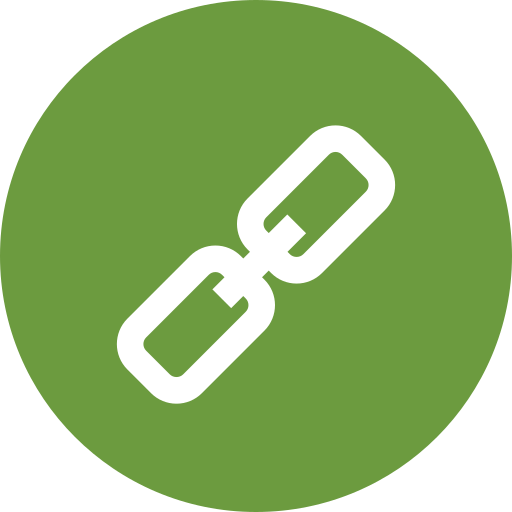| Package | Per pill | Total price | Save | Order |
|---|---|---|---|---|
| 250mg × 10 Pills | $3.78 | $37.81 + Bonus - 4 Pills | - | Add to cart |
| 250mg × 20 Pills | $3.08 | $61.61 + Bonus - 4 Pills | $14.00 | Add to cart |
| 250mg × 30 Pills | $2.85 | $85.41 + Bonus - 4 Pills | $27.90 | Add to cart |
| 250mg × 40 Pills | $2.73 | $109.20 + Bonus - 4 Pills | $42.00 | Add to cart |
| 250mg × 60 Pills | $2.61 | $156.80 + Bonus - 4 Pills | $70.20 | Add to cart |
| 250mg × 90 Pills | $2.54 | $228.19 + Bonus - 7 Pills Free Trackable Delivery | $111.60 | Add to cart |
| 250mg × 120 Pills | $2.50 | $299.59 + Bonus - 7 Pills Free Trackable Delivery | $153.60 | Add to cart |
| 250mg × 180 Pills | $2.46 | $442.38 + Bonus - 11 Pills Free Trackable Delivery | $237.60 | Add to cart |
Trecator SC 250 mg is an antibacterial medication used to treat various types of bacterial infections, including tuberculosis. It is a prescription medication that belongs to the class of drugs known as antitubercular agents. In this article, we will provide a comprehensive guide on how to buy and use Trecator SC 250 mg, including its benefits, side effects, and precautions.
What is Trecator SC 250 mg?
Trecator SC 250 mg is a generic medication that contains the active ingredient ethionamide. It is used to treat tuberculosis, a bacterial infection that affects the lungs and other parts of the body. Trecator SC 250 mg is usually prescribed in combination with other medications to treat tuberculosis.
Benefits of Trecator SC 250 mg
Trecator SC 250 mg has several benefits, including:
- Effective treatment of tuberculosis: Trecator SC 250 mg is effective in treating tuberculosis, especially when used in combination with other medications.
- Affordable: Trecator SC 250 mg is a generic medication, which makes it more affordable than brand-name medications.
- Convenient: Trecator SC 250 mg is available in a convenient tablet form, making it easy to take.
How to Buy Trecator SC 250 mg
There are several ways to buy Trecator SC 250 mg, including:
- Online Pharmacies: You can buy Trecator SC 250 mg online from reputable pharmacies. Make sure to choose a pharmacy that is licensed and certified to ensure that you are getting a genuine product.
- Local Pharmacies: You can also buy Trecator SC 250 mg from local pharmacies. Make sure to present a valid prescription from your doctor.
- Discount Stores: Some discount stores may carry Trecator SC 250 mg. However, make sure to check the expiration date and the authenticity of the product.
Discounts and Offers
There are several discounts and offers available for Trecator SC 250 mg, including:
- Discount Trecator SC 250 mg Amex: You can get a discount on Trecator SC 250 mg when you pay with Amex.
- Buy Trecator SC 250mg Free Shipping: Some online pharmacies offer free shipping on Trecator SC 250 mg.
- Generic Trecator SC 250 mg Buy On-Line: You can buy generic Trecator SC 250 mg online at a lower price than the brand-name version.
Table: Comparison of Prices
| Pharmacy | Price | Shipping |
|---|---|---|
| Online Pharmacy 1 | $10.99 | Free shipping |
| Online Pharmacy 2 | $12.99 | $5 shipping |
| Local Pharmacy | $15.99 | N/A |
| Discount Store | $9.99 | N/A |
Precautions and Side Effects
Trecator SC 250 mg can cause several side effects, including:
- Nausea and vomiting
- Diarrhea
- Abdominal pain
- Headache
- Dizziness
To minimize the risk of side effects, make sure to:
- Take Trecator SC 250 mg with food
- Avoid taking Trecator SC 250 mg with other medications that can interact with it
- Follow the dosage instructions carefully
List of Precautions
Here are some precautions to take when using Trecator SC 250 mg:
- Pregnancy and Breastfeeding: Trecator SC 250 mg should be used with caution in pregnant and breastfeeding women.
- Liver and Kidney Disease: Trecator SC 250 mg should be used with caution in people with liver and kidney disease.
- Allergic Reactions: If you experience any allergic reactions, such as rash or itching, stop taking Trecator SC 250 mg and seek medical attention.
Ordering Trecator SC 250 mg Online
To order Trecator SC 250 mg online, follow these steps:
- Choose a Reputable Pharmacy: Choose a reputable online pharmacy that is licensed and certified.
- Present a Valid Prescription: Present a valid prescription from your doctor.
- Pay for the Medication: Pay for the medication using a secure payment method.
- Receive the Medication: Receive the medication at your doorstep.
Conclusion
Trecator SC 250 mg is an effective medication for treating tuberculosis. It is available at an affordable price and can be bought online or at local pharmacies. However, make sure to follow the dosage instructions carefully and take precautions to minimize the risk of side effects. By following the guidelines outlined in this article, you can safely and effectively use Trecator SC 250 mg to treat your tuberculosis infection.
FAQs
Here are some frequently asked questions about Trecator SC 250 mg:
- Q: What is the dosage of Trecator SC 250 mg? A: The dosage of Trecator SC 250 mg varies depending on the individual and the severity of the infection. Follow the dosage instructions carefully.
- Q: Can I take Trecator SC 250 mg with other medications? A: Trecator SC 250 mg can interact with other medications. Make sure to consult your doctor before taking any other medications.
- Q: Is Trecator SC 250 mg safe for pregnant and breastfeeding women? A: Trecator SC 250 mg should be used with caution in pregnant and breastfeeding women. Consult your doctor before taking the medication.
By following the guidelines outlined in this article, you can safely and effectively use Trecator SC 250 mg to treat your tuberculosis infection. Remember to always consult your doctor before taking any medication, and follow the dosage instructions carefully to minimize the risk of side effects.
Tuberculosis (TB) is a bacterial infection caused by Mycobacterium tuberculosis (MTB) that primarily affects the lungs, but can also spread to other parts of the body. According to the World Health Organization (WHO), TB is one of the top 10 causes of death worldwide, with approximately 1.5 million deaths reported in 2020. The emergence of multidrug-resistant (MDR) TB has further complicated the treatment of this disease, making it a significant public health concern. In this article, we will discuss the treatment of MDR TB, the Mycobacterium tuberculosis susceptible to it, and the various treatment options available.
What is Multidrug-Resistant Tuberculosis?
MDR TB is a type of TB that is resistant to at least two of the most powerful first-line antibiotics used to treat TB: isoniazid and rifampicin. This resistance makes it challenging to treat MDR TB, as it requires the use of second-line drugs that are often more toxic, less effective, and more expensive. The development of MDR TB is often the result of incomplete or inadequate treatment, which allows the bacteria to mutate and become resistant to the antibiotics.
Mycobacterium Tuberculosis: The Causative Agent of TB
Mycobacterium tuberculosis is a Gram-positive, rod-shaped bacterium that is the primary cause of TB. The bacteria are transmitted through the air when an infected person coughs, sneezes, or talks, releasing droplets that contain the bacteria. Once inhaled, the bacteria can infect the lungs and cause disease. MTB is a complex organism that has developed various mechanisms to evade the host's immune system and resist antibiotics.
Factors Contributing to the Development of MDR TB
Several factors contribute to the development of MDR TB, including:
- Inadequate treatment: Incomplete or inadequate treatment of TB can lead to the development of MDR TB.
- Poor adherence to treatment: Failure to adhere to the treatment regimen can result in the development of MDR TB.
- Misuse of antibiotics: The misuse of antibiotics, such as using them for non-TB conditions or using them inappropriately, can contribute to the development of MDR TB.
- HIV co-infection: People living with HIV are more likely to develop MDR TB due to their compromised immune system.
Treatment Options for MDR TB
The treatment of MDR TB is complex and requires the use of second-line drugs. The WHO recommends the following treatment options for MDR TB:
| Drug | Dosage | Duration |
|---|---|---|
| Kanamycin | 15-20 mg/kg/day | 6-12 months |
| Amikacin | 15-20 mg/kg/day | 6-12 months |
| Capreomycin | 15-20 mg/kg/day | 6-12 months |
| Ethionamide | 15-20 mg/kg/day | 12-18 months |
| Cycloserine | 10-15 mg/kg/day | 12-18 months |
| Levofloxacin | 10-15 mg/kg/day | 12-18 months |
Effective Treatment Regimens for MDR TB
The following are some effective treatment regimens for MDR TB:
- Regimen 1: Kanamycin, amikacin, or capreomycin, plus ethionamide, cycloserine, and levofloxacin.
- Regimen 2: Kanamycin, amikacin, or capreomycin, plus ethionamide, cycloserine, and moxifloxacin.
- Regimen 3: Bedaquiline, plus kanamycin, amikacin, or capreomycin, and ethionamide, cycloserine, and levofloxacin.
New and Emerging Treatments for MDR TB
Several new and emerging treatments for MDR TB are being developed, including:
- Bedaquiline: A new antibiotic that has shown promise in treating MDR TB.
- Delamanid: A new antibiotic that has been shown to be effective in treating MDR TB.
- Pretomanid: A new antibiotic that has been shown to be effective in treating MDR TB.
Challenges in Treating MDR TB
The treatment of MDR TB is challenging due to several factors, including:
- Toxicity: Second-line drugs used to treat MDR TB can be toxic and cause serious side effects.
- Cost: The cost of treating MDR TB is high, making it inaccessible to many people in low- and middle-income countries.
- Duration: The treatment of MDR TB can take up to 2 years, which can be challenging for patients to adhere to.
- HIV co-infection: People living with HIV are more likely to develop MDR TB, making it essential to address HIV co-infection in the treatment of MDR TB.
Prevention and Control of MDR TB
Preventing and controlling MDR TB requires a multifaceted approach, including:
- Improving treatment adherence: Ensuring that patients adhere to their treatment regimen can help prevent the development of MDR TB.
- Enhancing infection control: Implementing effective infection control measures can help prevent the transmission of MDR TB.
- Strengthening health systems: Strengthening health systems can help improve the diagnosis and treatment of MDR TB.
- Promoting research and development: Promoting research and development of new treatments and diagnostics can help improve the treatment of MDR TB.
Conclusion
The treatment of MDR TB is complex and challenging, requiring the use of second-line drugs and a comprehensive approach to prevention and control. Understanding the Mycobacterium tuberculosis and its susceptibility to MDR TB is essential in developing effective treatment options. New and emerging treatments, such as bedaquiline, delamanid, and pretomanid, offer hope for improving the treatment of MDR TB. However, addressing the challenges in treating MDR TB, including toxicity, cost, duration, and HIV co-infection, is essential in improving the outcomes of patients with MDR TB.
Recommendations
Based on the current evidence, the following recommendations can be made:
- Improve treatment adherence: Ensuring that patients adhere to their treatment regimen can help prevent the development of MDR TB.
- Enhance infection control: Implementing effective infection control measures can help prevent the transmission of MDR TB.
- Strengthen health systems: Strengthening health systems can help improve the diagnosis and treatment of MDR TB.
- Promote research and development: Promoting research and development of new treatments and diagnostics can help improve the treatment of MDR TB.
- Address HIV co-infection: Addressing HIV co-infection is essential in the treatment of MDR TB.
Some key points to consider when treating MDR TB include:
- Using a combination of second-line drugs: Using a combination of second-line drugs can help improve the effectiveness of treatment.
- Monitoring for toxicity: Monitoring for toxicity is essential in preventing serious side effects.
- Providing patient support: Providing patient support can help improve treatment adherence and outcomes.
- Addressing HIV co-infection: Addressing HIV co-infection is essential in the treatment of MDR TB.
- Promoting research and development: Promoting research and development of new treatments and diagnostics can help improve the treatment of MDR TB.
Overall, the treatment of MDR TB requires a comprehensive approach that includes improving treatment adherence, enhancing infection control, strengthening health systems, promoting research and development, and addressing HIV co-infection. By working together, we can improve the outcomes of patients with MDR TB and ultimately eliminate this disease.
Here are some key steps to take to prevent the spread of MDR TB:
- Get tested: If you have been exposed to someone with TB, get tested to see if you have the infection.
- Take your medication: If you have TB, take your medication as directed to prevent the development of MDR TB.
- Practice good hygiene: Practice good hygiene, such as covering your mouth when you cough and washing your hands frequently, to prevent the transmission of TB.
- Avoid close contact: Avoid close contact with people who have TB, especially if you have a weakened immune system.
- Get vaccinated: Get vaccinated against TB if you are at high risk of infection.
By taking these steps, we can prevent the spread of MDR TB and ultimately eliminate this disease.
Here are some common myths and misconceptions about MDR TB:
- Myth: MDR TB is not curable: Reality: MDR TB is curable, but it requires the use of second-line drugs and a comprehensive approach to treatment.
- Myth: MDR TB is only found in developing countries: Reality: MDR TB can be found in any country, and it is a global health concern.
- Myth: MDR TB is not contagious: Reality: MDR TB is contagious and can be spread through the air when an infected person coughs or sneezes.
- Myth: MDR TB only affects people with HIV: Reality: MDR TB can affect anyone, regardless of their HIV status.
- Myth: MDR TB is not a serious disease: Reality: MDR TB is a serious disease that can be life-threatening if left untreated.
By understanding the facts about MDR TB, we can work together to prevent the spread of this disease and ultimately eliminate it.
In conclusion, MDR TB is a complex and challenging disease that requires a comprehensive approach to treatment and prevention. By understanding the Mycobacterium tuberculosis and its susceptibility to MDR TB, we can develop effective treatment options and prevent the spread of this disease. It is essential to address the challenges in treating MDR TB, including toxicity, cost, duration, and HIV co-infection, and to promote research and development of new treatments and diagnostics. By working together, we can improve the outcomes of patients with MDR TB and ultimately eliminate this disease.
























